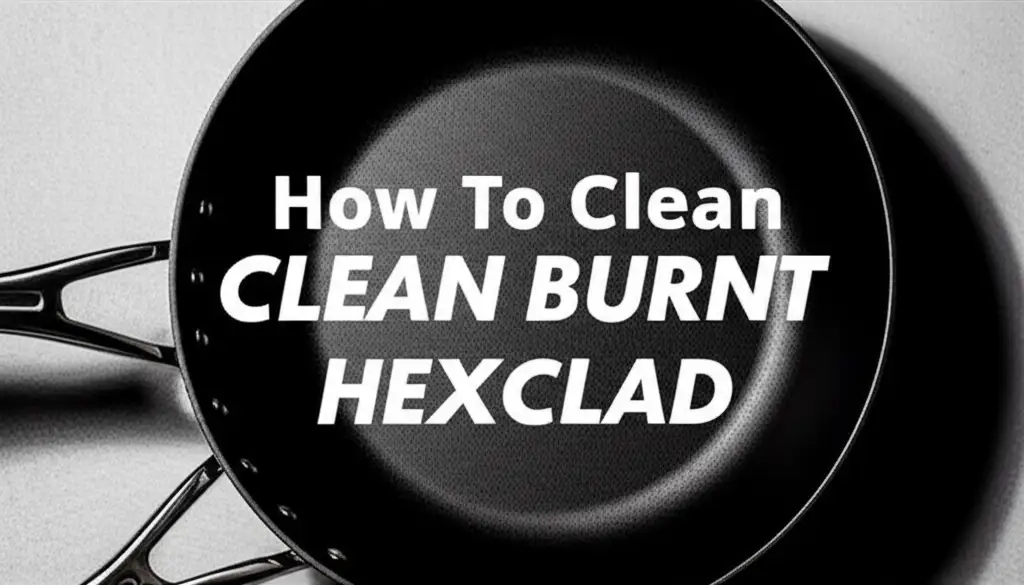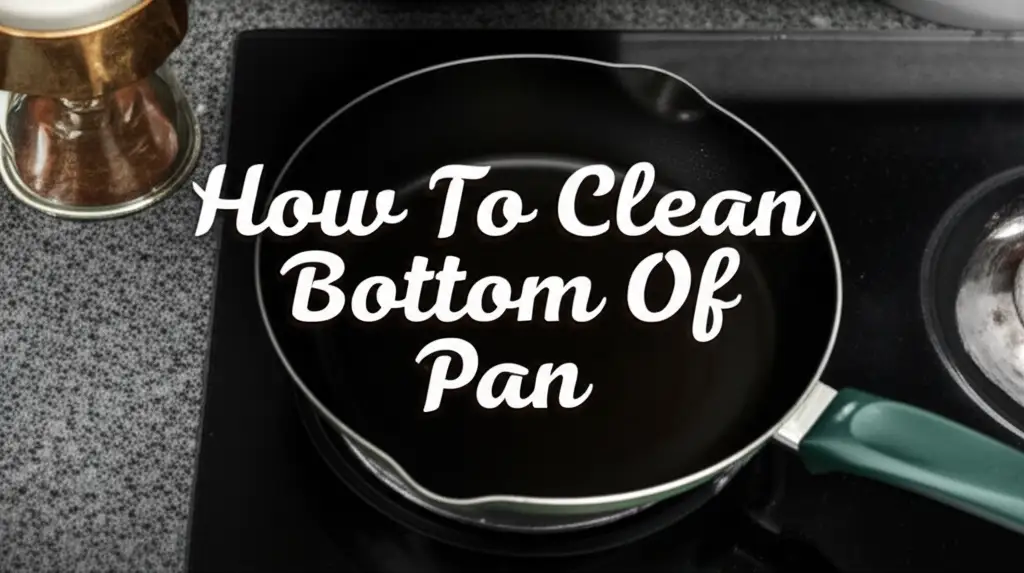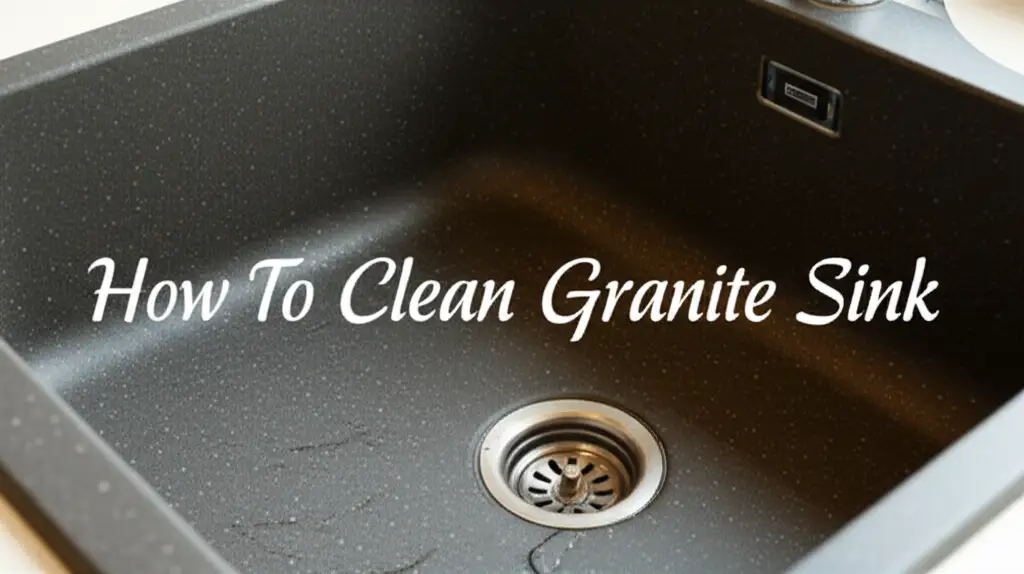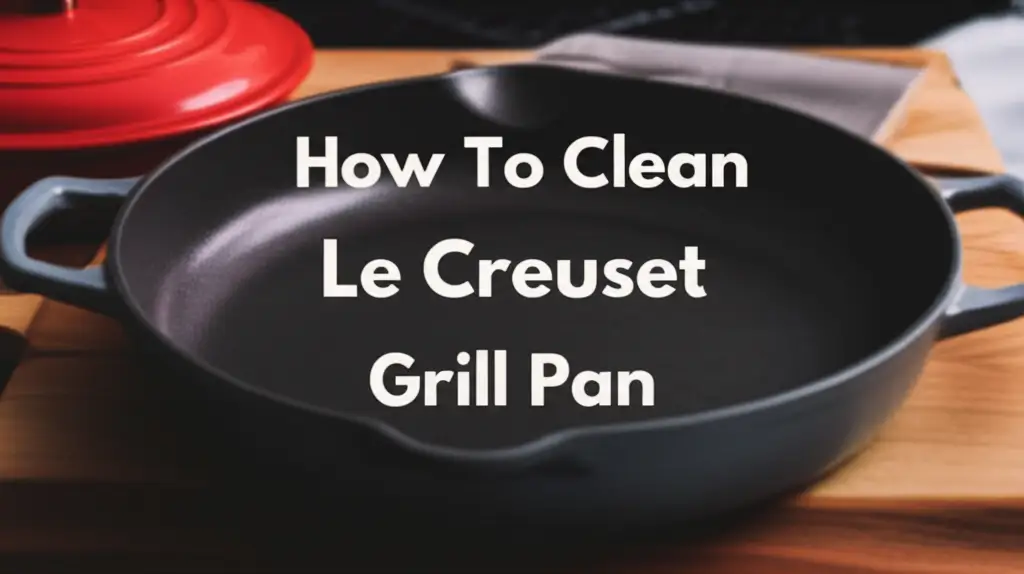· Kitchen Cleaning · 15 min read
How To Clean Burnt Hexclad

Clean Burnt Hexclad: Restore Your Hybrid Cookware
A burnt pan can ruin anyone’s day. Perhaps you cooked a delicious meal, then turned your back for a moment. Suddenly, you found a stubborn, dark stain at the bottom of your prized Hexclad pan. It happens to the best of us.
Hexclad cookware offers a unique blend of stainless steel and non-stick properties. This hybrid design provides durability and performance. Cleaning burnt Hexclad requires specific methods to protect its surface. You cannot simply scrub it with harsh tools. This article helps you understand how to safely and effectively clean burnt Hexclad. We will cover gentle approaches, stronger solutions for tough stains, and important preventative steps. Get ready to bring your Hexclad cookware back to its original glory.
Takeaway
- Always start with the gentlest cleaning method for burnt Hexclad.
- Avoid abrasive tools like steel wool or harsh chemical cleaners.
- Baking soda and vinegar mixtures are effective for stubborn burns.
- Proper heat management prevents most burning incidents.
To effectively clean burnt Hexclad, soak the pan with warm water and a small amount of dish soap first. For more stubborn stains, create a paste using baking soda and water. Apply this paste and let it sit for several hours before gently scrubbing with a non-abrasive sponge or soft brush.
Understanding Hexclad Cookware’s Design
Hexclad cookware is different from typical non-stick pans. It features a unique hybrid design. This design combines a stainless steel surface with a raised hexagonal pattern. The valleys of this pattern contain a non-stick coating. The raised steel peaks protect this coating from damage. This construction offers the durability of stainless steel and the easy release of non-stick.
This hybrid surface means you must use specific cleaning methods. Harsh abrasives can scratch the stainless steel peaks. Strong chemicals can damage the non-stick valleys. Understanding this design helps you choose the right cleaning tools. It ensures you protect your investment. My experience has shown me that treating Hexclad with care extends its life.
The stainless steel component provides excellent heat distribution. It also makes the pan robust. The non-stick coating helps food release easily. When food burns onto Hexclad, it often sticks to both the steel peaks and the non-stick valleys. This requires a balanced cleaning approach. You need methods strong enough to remove the burnt residue but gentle enough to preserve the pan’s integrity. Always remember the unique nature of this cookware.
Hexclad pans conduct heat very well. This can sometimes lead to localized hot spots if not managed properly. These hot spots can cause food to burn more easily than with other types of pans. Understanding this helps you adjust your cooking habits. It also informs your cleaning approach for burnt areas. Many users find their Hexclad performs best with medium heat settings. High heat settings are rarely necessary. I have learned to adjust my burner settings when cooking with my Hexclad. This prevents most burning issues before they start.
Gentle Methods for Light Burnt Spots
Start with the least aggressive cleaning method. This protects your Hexclad pan’s unique surface. For light burns or recently burnt food, a simple soak often works wonders. Do not let burnt food dry onto the pan. Act quickly if you can.
First, let the pan cool completely. Never put a hot pan into cold water. This can cause thermal shock. Thermal shock can warp your pan over time. Once cool, fill the pan with warm water. Add a few drops of dish soap. Let the pan soak for at least 30 minutes. For slightly more stubborn spots, you can let it soak for a few hours or even overnight. The warm, soapy water helps to loosen the burnt bits.
After soaking, pour out the water. Use a soft sponge or a nylon brush to gently scrub the burnt areas. The goal is to lift the residue, not to scrape it off. You may find that most of the burnt material comes away easily. If some spots remain, do not resort to abrasive pads yet. Repeat the soaking process if needed. A little patience often pays off. This method works well for minor sticking or light discoloration.
Sometimes, a light burn is simply dried-on residue. You can try a slightly firmer scrub with the nylon brush. Make sure it is truly non-abrasive. Scrub in circular motions, following the pattern of the Hexclad. This helps lift the burnt food. For more information on cleaning burnt stainless steel, which shares some material characteristics with Hexclad, you can refer to our guide on how to clean burnt stainless steel pot. This gentle approach extends the life of your Hexclad cookware.
Tackling Stubborn Burnt Residue: Baking Soda & Vinegar Solutions
When gentle soaking does not work, it is time for a slightly stronger approach. Baking soda and vinegar are natural cleaning agents. They are also safe for Hexclad cookware. This combination creates a fizzy, abrasive-free cleaning solution. It helps lift even stubborn burnt food particles.
First, sprinkle a generous layer of baking soda over the burnt area. Make sure it completely covers the stain. Next, add a small amount of water to create a thick paste. Mix it directly in the pan. The paste should be thick enough to cling to the burnt spots. Let this baking soda paste sit on the burn for at least a few hours. For very stubborn burns, leave it overnight. The baking soda helps to break down the burnt food.
After the paste has sat, add a splash of white vinegar to the pan. You will see a fizzing reaction. This fizzing action helps to loosen the burnt residue further. Let it fizz for a few minutes. Then, use a soft sponge or a non-abrasive brush to gently scrub the area. The combination of baking soda’s mild abrasive quality and vinegar’s acidity works wonders. Rinse the pan thoroughly with warm water. Repeat the process if necessary for extremely tough stains. I have personally used this method many times. It has restored many of my kitchen items, including pans with general burnt bottoms, as outlined in our guide on how to clean burnt pan bottoms.
This method is effective because baking soda absorbs odors and gently scours. Vinegar’s acidic nature helps dissolve mineral deposits and burnt-on grime. Together, they create a powerful yet safe cleaning duo. Avoid using concentrated vinegar directly on the pan for extended periods without baking soda. The acidity alone might affect the non-stick coating over a long time. Always dilute or combine with baking soda for best results. This specific approach respects the Hexclad design.
Dealing with Burnt-On Oil and Grease
Burnt oil and grease can be especially challenging. They form a sticky, carbonized layer that clings tightly to surfaces. This type of residue often appears as dark, shiny patches. It can also be very difficult to remove using just soap and water. Hexclad’s hybrid surface requires careful treatment for these stains.
Start by applying a generous amount of baking soda directly to the burnt oil spots. Do not add water yet. Let the dry baking soda sit for about 15-20 minutes. Baking soda is excellent at absorbing grease. After the initial wait, add a small amount of dish soap to the baking soda. Then, add just enough warm water to create a loose paste. Mix it well. This mixture helps break down the greasy bonds.
Let this new paste sit on the burnt oil for at least 30 minutes, or even longer for severe stains. The longer it sits, the more it works. After soaking, gently scrub the area with a soft sponge or a silicone brush. You want to work the paste into the burnt grease. The combination of baking soda and soap helps to lift and emulsify the oil. Rinse the pan well with warm water. Repeat if necessary. For similar challenges with other cookware, you might find useful information on how to clean burnt oil from stainless steel pan.
Another effective trick for burnt oil is to use a little lemon juice. After applying the baking soda and dish soap paste, squeeze some fresh lemon juice over the mixture. The acidity of the lemon juice helps cut through grease. It also leaves a fresh scent. Allow it to sit for an additional 10-15 minutes before scrubbing. This method specifically targets the stubborn nature of burnt oils. Always ensure thorough rinsing after cleaning. This removes all residue. This ensures your Hexclad is ready for its next use. It also maintains the pan’s non-stick properties.
Tools and Products to Avoid When Cleaning Hexclad
Protecting your Hexclad’s unique surface is important. Using the wrong tools or cleaners can cause permanent damage. This damage can reduce the pan’s performance and lifespan. I have seen many good pans ruined by improper cleaning. Learn what to avoid to keep your Hexclad in top condition.
First, never use abrasive scrubbers. This includes steel wool, abrasive scouring pads, or metal spatulas. Hexclad’s design has raised stainless steel peaks. These peaks protect the non-stick valleys. Abrasive materials can scratch these peaks. They can also wear down the non-stick coating. This compromises the pan’s non-stick properties. It makes food stick more often. Always choose soft sponges, silicone scrubbers, or nylon brushes. These tools are gentle enough for the pan’s surface.
Second, avoid harsh chemical cleaners. Oven cleaners, strong degreasers, or bleach-based products can be very damaging. These chemicals contain corrosive agents. These agents can strip or degrade the non-stick coating. They can also discolor the stainless steel. Stick to natural cleaners like baking soda, vinegar, and dish soap. These are effective and safe for your Hexclad. Using products meant for other types of burnt surfaces, like a guide on how to clean burnt plastic from oven, should not be directly applied to your Hexclad. Each material needs its own care.
Third, do not use sharp metal utensils while cooking or cleaning. Knives, forks, or metal spatulas can scratch the non-stick surface. Always use silicone, wood, or heat-resistant plastic utensils. This precaution extends to scraping burnt food. If you need to dislodge something, use a wooden spoon or a silicone spatula. These will not harm the pan. Proper care of your Hexclad extends its performance. It also ensures you get the most out of your investment.
Finally, avoid extremely high heat or putting a hot pan directly into cold water. Thermal shock can warp the pan. This warping can create uneven cooking surfaces. It also weakens the pan’s structure over time. Always let your Hexclad cool down naturally before cleaning. These simple rules keep your Hexclad performing as it should.
Preventative Measures: Keeping Your Hexclad Cookware Pristine
The best way to deal with burnt Hexclad is to prevent burns in the first place. Good cooking habits and proper pan use significantly reduce the chances of food sticking and burning. I have learned that prevention is much easier than cleaning.
First, use appropriate heat settings. Hexclad pans are highly conductive. They distribute heat very efficiently. You often do not need to use high heat settings. Medium heat is usually sufficient for most cooking tasks. For searing, a medium-high setting might be needed, but always monitor the pan closely. Overheating is a primary cause of burnt food. It also damages the non-stick coating over time. Adjust your stove settings. Learn how your Hexclad pan responds to different heat levels.
Second, always use some oil or fat. While Hexclad is non-stick, a small amount of cooking oil, butter, or other fat is always recommended. This creates a barrier between the food and the pan. It enhances the non-stick properties. It also helps prevent food from sticking and burning. This is especially true for foods like eggs or delicate fish. Ensure the oil is properly heated before adding food. This creates a quick release surface.
Third, do not overcrowd your pan. Cooking too much food at once lowers the pan’s temperature. This causes food to steam instead of sear. It also increases the risk of food sticking and burning. Cook in batches if necessary. This ensures even cooking and reduces the chance of food burning. Overcrowding also makes it harder to stir and manage your ingredients effectively.
Fourth, clean your pan properly after every use. Even small amounts of leftover residue can carbonize and become stubborn stains next time you cook. A quick wash with warm soapy water after each use prevents buildup. This simple habit keeps your Hexclad performing its best. For instance, if you are looking into how to clean burnt rice from pot, it is often due to similar issues of heat management or improper initial non-stick application. Preventing burnt food on your Hexclad ensures longevity and consistent performance.
Restoring Shine and Maintaining Performance
After successfully cleaning burnt residue from your Hexclad, you might notice some dullness. The pan might not have its original shine. Restoring this luster and ensuring long-term performance requires a few simple steps. These steps also help maintain the non-stick properties.
First, after deep cleaning, ensure your pan is thoroughly dry. Water spots or mineral deposits can form if water dries on the surface. Towel dry the pan immediately after washing. For an extra shine, you can buff the stainless steel areas with a microfiber cloth. This brings back the metallic gleam. It also removes any remaining streaks or smudges. A dry pan also prevents mold or mildew growth in storage.
Second, consider a light re-seasoning, especially if you used a stronger cleaning method. While Hexclad is not traditionally seasoned like cast iron, a light layer of oil helps maintain its non-stick properties. Apply a very thin coat of high smoke point oil, like grapeseed or avocado oil, to the entire interior surface. Wipe off any excess. Then, heat the pan on low heat for a few minutes. Let it cool completely. This helps to condition the non-stick valleys and protect the surface.
Third, proper storage is vital. Avoid stacking other pans directly inside your Hexclad without protection. The metal edges of other cookware can scratch the Hexclad’s surface. Use pan protectors, felt pads, or a soft cloth between stacked pans. This prevents abrasion. Proper storage helps maintain both the aesthetic and functional quality of your Hexclad. It keeps the pan looking new.
Finally, regular, gentle cleaning keeps your Hexclad performing optimally. Do not wait for severe burns to occur. Address minor sticking or discoloration promptly. Consistent care prevents major issues. This practice also makes future cleaning much easier. Just like maintaining other household items, taking care of your Hexclad extends its life and ensures it performs well every time you cook.
FAQ Section
Can I use steel wool on Hexclad?
No, do not use steel wool on Hexclad cookware. Steel wool is too abrasive. It can scratch the stainless steel peaks and damage the non-stick coating in the valleys. Always use soft sponges, nylon brushes, or silicone scrubbers to protect the pan’s surface.
Is Hexclad dishwasher safe?
Yes, Hexclad cookware is dishwasher safe. However, hand washing is generally recommended for best results and to prolong the lifespan of the pan. Dishwasher detergents can be harsh over time and may dull the pan’s finish or affect the non-stick properties.
How do I remove discoloration from my Hexclad pan?
Discoloration often results from mineral deposits or high heat. To remove it, create a paste of baking soda and a little water. Apply it to the discolored areas and let it sit for an hour. Then, gently scrub with a soft sponge and rinse thoroughly.
Can I use oven cleaner on Hexclad?
No, never use oven cleaner or other harsh chemical cleaners on Hexclad. These strong chemicals can corrode the stainless steel and severely damage or strip the non-stick coating. Stick to mild dish soap, baking soda, and vinegar for safe cleaning.
What causes food to burn on Hexclad?
Food typically burns on Hexclad due to excessive heat or insufficient oil. Hexclad heats efficiently, so lower to medium heat is often enough. Always use a small amount of cooking oil to create a barrier and prevent sticking. Overcrowding the pan can also lead to uneven cooking and burning.
How often should I deep clean my Hexclad?
Deep clean your Hexclad only when necessary, for stubborn burnt spots or significant discoloration. For daily use, a simple wash with warm water and dish soap after each use is sufficient. Regular maintenance prevents the need for frequent deep cleaning.
Conclusion
Finding a burnt mess in your Hexclad pan can be frustrating. However, restoring your Hexclad is a straightforward process when you use the right methods. We have explored how to effectively clean burnt Hexclad. This includes starting with gentle soaking methods for light burns. We also covered using powerful baking soda and vinegar combinations for more stubborn residues. Remember the unique hybrid design of Hexclad. This pan needs specific care.
Always choose soft, non-abrasive tools for cleaning. Avoid harsh chemicals that can damage the pan’s non-stick surface. Prevention remains the most important step. Manage your heat settings. Use a little oil. Do not overcrowd the pan. These simple habits keep your Hexclad performing perfectly. By following these guidelines, you extend the life of your Hexclad cookware. You also ensure it remains a reliable tool in your kitchen for many years. Keep your Hexclad clean and shining. Enjoy effortless cooking every time.
- Hexclad cleaning
- burnt pan
- cookware care
- kitchen tips
- stain removal
- hybrid cookware




